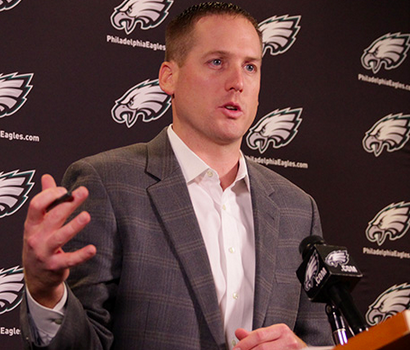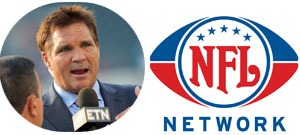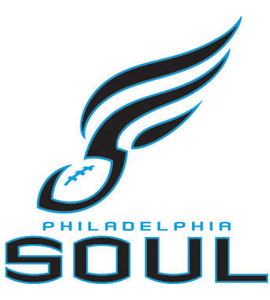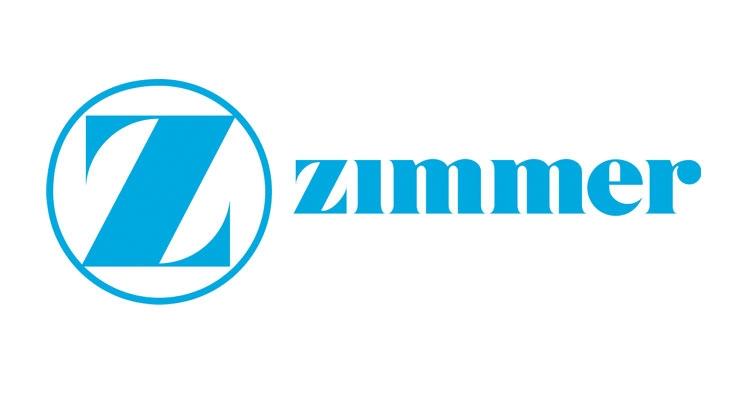EAGLES VICE PRESIDENT OF PLAYER PERSONNEL ED MARYNOWITZ’S REPORTERS ROUNDTABLE
admin

ED MARYNOWITZ: Morning, everyone. Appreciate you guys coming down. It’s been a busy offseason for you guys and us, so looking forward to answering questions. Fire away.
Q. This is another poor safety class. Why is it so hard to find good safeties coming out of college? Really NFL-ready safeties? For a team like yours and the scheme you play where coverage is such an important point of the safety position, do you look at corners a lot more than maybe some other teams as possible conversion guys?
ED MARYNOWITZ: Yeah, that’s a great question. I think the safety position, or the traditional safety position, is a little bit of a dying breed. You don’t see as much of the true box-down safeties anymore. It’s becoming more of a pass‑happy, spread league and the majority of the guys with size and length are playing corner now. I mean, there is certainly an affinity for those guys to cover the big wideouts now. So a lot of those guys, especially the ones that we look for, we’re looking for guys that can cross-train and maybe play both. The way we play our safeties, we like those guys to be able to roll down and play slot coverage. In order to play man coverage, they have to have the athleticism to do that. Typically, the traditional box-safeties don’t have that.
Q. Is University of Alabama safety Landon Collins a guy that can do that?
ED MARYNOWITZ: He can do to it a degree. I think all these guys have strengths and weaknesses. Landon has the potential to do that. Maybe not to the degree that some other guys do, but he certainly has the ability to do that.
Q. When I talk to people about you, the one thing everybody that I’ve talked to has emphasized is detail‑oriented. Can you tell me about that? Is that just something you learned as you worked with people like University of Alabama Head Coach Nick Saban and so forth? Or have you always been like that?
ED MARYNOWITZ: I’ve been really fortunate to be around a lot of great people. I mean, it starts ‑‑ my parents are like that. I think I was raised the right way in terms of work ethic and being detailed and handling yourself the right way. But I’ve been fortunate from a football standpoint, whether it was high school coaches, to college coaches at La Salle [University], I really formulated the majority of what I believe from a football-philosophical standpoint starting with George O’Leary at Central Florida, which was my first job. An extremely demanding, and successful head coach, but you learn the right way to conduct your business, the right way to operate and the right way to over-prepare. I went from there to the Miami Dolphins; I had a great opportunity to work under the direction and the umbrella of Bill Parcells, who, obviously, his resume speaks for itself. But it’s a ‘one-wrong, all wrong’ type of approach, in terms of what you do. It forces you to over-prepare. I spent some time with him in Miami and then I had a great opportunity to go to Alabama and work for a guy like Nick Saban. I worked hand in hand with him for four years, three full seasons, and the majority of what I believe in terms of how to build a championship‑caliber football team, how to work, how to manage people, really was developed through him. So I’ve been around a lot of great people. Certainly came here and spent a year under [former Eagles head coach] Andy Reid and that staff, which was a great experience, and now working for Chip, which has been incredible. So I’ve been fortunate and very blessed to be around great people, so I think that’s what’s formed a little bit of who I am.
Q. I’m told that the parameters at Alabama, when you guys set up your recruiting thing, the parameters for players were very similar to what NFL teams do. They were more like that than what college teams did.
ED MARYNOWITZ: Yeah, Nick’s philosophy, he had been in the NFL for quite some time. Our philosophy there is a very similar philosophy to what we have here. It was a very height, weight, speed specific operation. So we’re looking to identify — this is a size‑speed league. We believe the SEC was a size‑speed league. There is enough statistical data that will support that in terms of players that are playing at a high level that there is a certain prototype. So our goal there was that although there may be varying degrees of players in terms of ability standpoint, when the starters come off the field and the backups come in, they all relatively look the same. So there is a certain prototype at each position. We try to build the same thing here, whether it’s inside linebacker, outside linebacker, corner, safety, there is a prototype and model that fits what we do. We did the same thing there.
Q. What do you consider to be the strengths of this draft and where is it thinnest?
ED MARYNOWITZ: It’s not that different than probably the drafts in the past three years. I think there are certain positions of strengths and weakness. This one in particular, I think especially in the mid-rounds or the solid-starter categories, as we’d call them. There are some guys on the offensive line that I think can help and can contribute. There are some guys in the secondary, some corners that have length and size, some guys that are potential safeties. I think there are enough of those guys in this draft at all levels. It’s another strong class at wide receiver, as it was last year. So I think at all different levels you’ll be able to get quality players.
Q. In terms of the draft, have you always been really interested in and fascinated in it? Did you have a big board when you were 12 years old or something?
ED MARYNOWITZ: No, no. I never did that. I think I always knew that — everybody usually asks that question, ‘Did you want to coach?’ Typically, if you played or you’ve been involved in football, most people want to be involved on the coaching end of it. I never wanted to be involved in a coaching capacity. I always liked this side of it, in terms of roster management, team building, the draft, player personnel and player evaluations. That got me going a lot more than coaching did. But I never had a big board; I never skipped school to study the draft or any of those kind of things. I was playing more than I was doing that. But it’s certainly something that I’ve been interested in for a long time.
Q. As far as the scouting process goes, how much can reality differ from perception? The reason I ask is one of the players we follow is first-round WR prospect Kevin White out of West Virginia. Going into the combine, there were huge concerns about his speed. He’s a Division I player, and of course he has a great 40 time. How can something like that happen with some guys? Was it even a concern for you
ED MARYNOWITZ: Yeah, I didn’t think when I watched him that the play speed was a concern of his off the tape. But I think that the way we approach the process is that every segment is a cross-check of each other. So when we go in, the tape in the fall is the tape in the fall. We’ll grade that accordingly. Then we’ll take the all‑star game exposure and we’ll grade that separately. Then it goes to the Combine and we’ll take the Combine numbers, testing numbers, how he did in the on‑field performance and we’ll grade that separately. Then we have his pro day exposure, we’ll grade that separately. So everything cross-checks one another. So just because a guy runs extremely fast at the Combine and times well, or maybe he tests well in all those different categories, but the tape’s not that good, we won’t let one thing affect the other. We’ll take it all into consideration, we’ll grade them all separately, but it’s all one piece of the puzzle.
Q. On Thursday, Friday and Saturday, how is the draft going to be different this year than in past years? Are you running it? What is the structure?
ED MARYNOWITZ: We’re still in some of the planning phases of that. Right now we’ve been focused on the board, getting those guys set in the right spot. In terms of the administration of the room and the responsibilities that each person will have, that is still to be determined.
Q. Are you on the phone with teams? Are you going to be the one who is negotiating trades?
ED MARYNOWITZ: It will be me and some other people, but, again, it’s a little bit to-be-determined on how we’re going to approach that.
Q. To be as prototype specific as you want to be in terms of selecting guys, and maybe this is an old‑fashioned way to look at it, but does that take some of the human element out of it? The intangible element? You said Coach Reid was a little bit more open to saying, ‘Ok, maybe this guy can play up to what you’d like to see him do, but he’s not as prototype specific as you’d like.’ Because to me, that is the difference between great evaluators and great scouts. They’re the ones that can see the stuff that other guys can’t see, not the ones who can see the stuff that guys can see?
ED MARYNOWITZ: Sure and I think there is still an element of that that you can do right now. No. 1, big picture‑wise, you want to play with the odds not against the odds. The odds are telling you that the majority of these guys that are under this certain prototype do not play at a starting level in the NFL. If you have seven draft picks, do you really want to waste one, especially in the top three rounds, on a guy that history is telling you, typically guys with these type of measurables don’t produce that level. That is one school of thought.
The way we approach the evaluations, it’s really a three‑part evaluation. So, No. 1, it’s the height, weight, speed according to the position. That’s one factor. So either they have that or they don’t. It doesn’t necessarily eliminate them, per se, but that’s one element of that. So you’ll grade that individually. Then the second part is the position specifics or the critical factors for that position, which is basically the guy’s athletic ability to play that specific spot, which is also relative to your system and scheme, which is different than — I mean, every team is different. We’ve got certain prototypes for that. So that is phase two of that. The third part is the character, attitude, intelligence piece, in terms of the right football make‑up and how we want to build our team. So each one in and of itself is evaluated, just because a guy is exceptional or deficient in one, it won’t preclude us from taking him, but ideally, especially in the upper rounds, you’re striving for guys that fit in all three of those. You just don’t want to take exceptions.
Q. Howie Roseman came in last year and talked about the philosophy being to take the best player available regardless of position. Is that still a philosophy?
ED MARYNOWITZ: I would expand that to say best player for us. It’s the best player available for us that fits our system. We want good players. I think your needs, they’re always fluid, they’re always flexible in terms of a position of strength right now could quickly become a position of weakness, so we want to take the best player available for us.
Q. With the first round specifically, in terms of trades, do a lot of those things get done beforehand? Do you anticipate going into Thursday night saying, ‘If this guy falls, we’ve already talked to this team?’ Or how does that work?
ED MARYNOWITZ: We have another round of meetings that will actually take place this afternoon and tomorrow and then at the beginning of next week where we’ll do a little bit of deeper conversation to some of the strategy part of what we’ll do. Some initial calls get placed toward the end of this week. There have been a few received on our end of people that may want to move up or move back. So people kind of gauge your interest in terms of jockeying for the position. The majority of those calls will happen next week and then as the players start to come off the board, that’s when the phones start ringing more.
Q. Pick number 20 – that’s right around historically where teams say there are usually 20, 22 guys that are real first-round players, and after that you’re kind of drafting second‑round guys. Where’s that line this year do you think?
ED MARYNOWITZ: I believe there’s really eight to ten players I believe that are really true difference-maker types and I don’t think that’s any different than it is in the past. Last year’s draft probably the same thing. When you go back the last three years, there really is probably ten players that I think everybody has conviction on. After that, I think it just depends on your system, your scheme and what you’re looking for.
Q. Were you at the tryout for QB Tim Tebow? What do you guys see from him as an organization and why do you think he can succeed here?
ED MARYNOWITZ: Yeah, I was there. We brought Tim in for a workout. Obviously, we were intrigued with what we saw there. We saw a player that had improved from the last time we saw him live, which was when he was here with New England. So we had some conversations and discussions and we felt that it was an opportunity to bring in somebody that could compete for a spot. Look, we’ve got 68 players on our football team right now. Tim’s one of them. So he’ll have an opportunity to compete for a roster spot, and his role will be determined by his performance, and I think it’s as simple as that. We’re bringing in a guy that will be able to compete, and we look forward to watching him compete.
Q. As a quarterback?
ED MARYNOWITZ: Yes, as a quarterback he’ll compete.
Q. Is Oregon QB Marcus Mariota one of those eight to ten difference makers?
ED MARYNOWITZ: Depending on who you ask. Marcus is a really good player. He’s been a very productive college football player. We’ve done our evaluation work on him, obviously. I’m not going to get into the specifics of where we have him or exactly what his strengths and weaknesses are. But he’s a player we’re aware of. We’ve gone through the process.
Q. What is your philosophy on trading up, moving as far as 20 to 2?
ED MARYNOWITZ: I share the same philosophy as Chip does in that. Philosophically, we are opposed to ‘mortgaging the future’ was Chip’s term. Really the way we look at it is draft picks – every draft pick you have is an opportunity to improve your football team. So the more opportunities we have to improve our team, we’re excited about that. So I’d rather have more picks than less picks. I think Chip shares the same philosophy. That doesn’t preclude us from moving up and doing something. I think you never say never. But philosophically, we have eight picks and we’d like to pick eight players or more, not less.
Q. When you talk about not mortgaging the future, is there a number in terms of future picks or what that would imply?
ED MARYNOWITZ: I think there is an internal number on that that we’re not going to share outside the building, but we know what mortgaging the future is internally.
Q. What is the process of evaluating Oregon players? I know Chip has kind of said that he recuses himself when it comes to those types of players. But how does that work? What input do you have?
ED MARYNOWITZ: We evaluate all those players the same way. Every player from an evaluation standpoint, I think the difference with Oregon players for Chip, and Alabama players in my case, we know a lot more of the character, attitude, intelligence because you’ve been around these guys. You you’ve recruited them. You know their family, the day‑to‑day, the make‑up, that is the hardest part of our job is figuring out the wiring and the make‑up of these guys. What helps is if you know the guy day‑to‑day and you’ve been around him, that piece of it is a little bit more clearly defined. But in terms of the evaluation of the player, you’re going to evaluate the player the same way you evaluate every other player.












